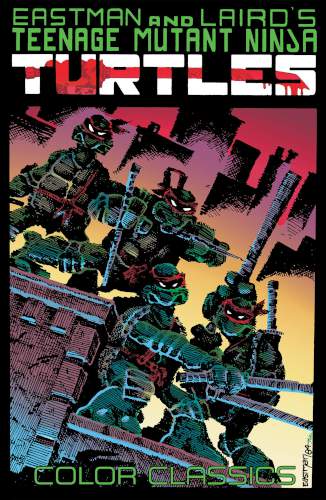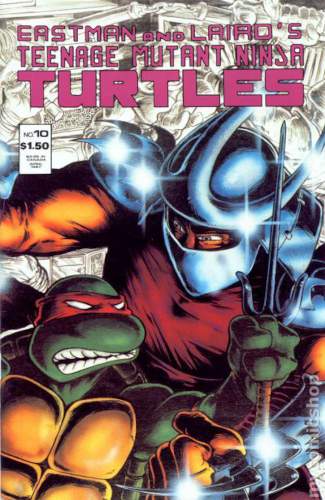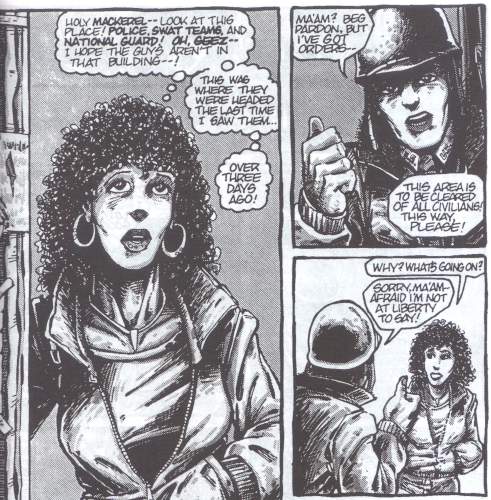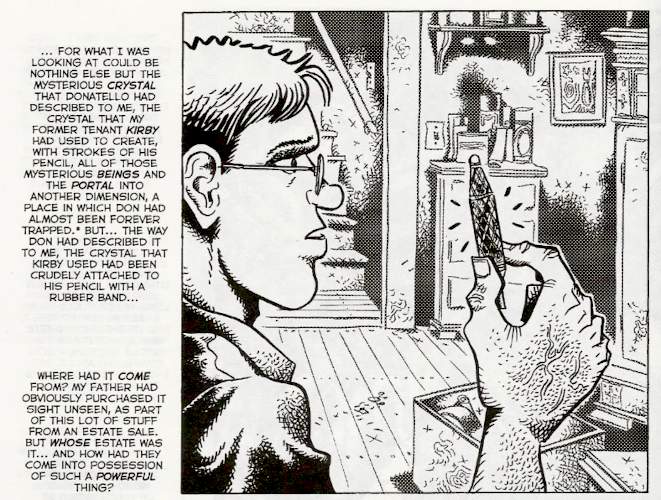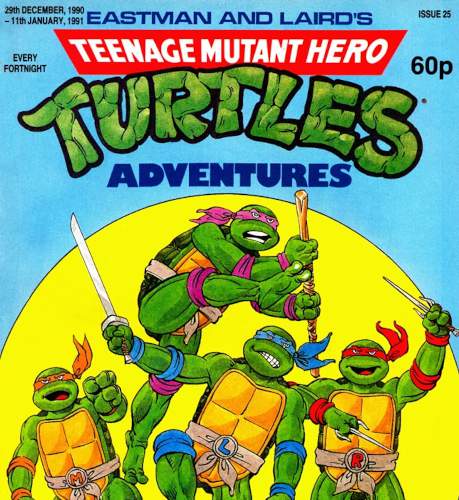What started as a simple gag comic ended up becoming the best-selling independent comic book of all time. It went on to spawn several movies, multiple animated TV series, and numerous video games. If you were a kid during the late 1980s and early 1990s, there’s a good chance you were obsessed with the Turtles at some point. But there’s also a good chance you didn’t really know everything about them. Even the most die-hard shell-heads won’t know some of the following bits of TMNT fun facts, which cover aspects ranging from the comics, the animated TV series, and the movies.
1. The Original TMNT Comic Was Actually a Daredevil Parody
The Teenage Mutant Ninja Turtles were originally meant as satire of gritty mid-1980s comics, complete with a premise that was intentionally too outlandish to be taken seriously by anyone. The two creators, Peter Laird and Kevin Eastman, often took aim at comics like Ronin and Teen Titans with their signature work, and no comic at the time was more open to parody than Daredevil. The Foot Clan is really just a reskin of The Hand, which was the group of ninjas that menace New York City and Daredevil in the Marvel comics. Furthermore, Splinter is a sly reference to the blind martial artist named Stick who mentored Matt Murdock. In Daredevil’s origin story, a young Matt Murdock rescued a man from being hit by a car, only to be splashed in the eyes with radioactive ooze. In the Mirage Comics version, that canister bounced off a young boy and instead hit a group of pet turtles, turning them into the bipedal fighting machines that we all know and love today.
2. The Iconic Shredder Was Meant to Be a One-Off Villain
Already in the first issue, Teenage Mutant Ninja Turtles introduced one of the most iconic characters of the series. Later adaptations almost exclusively refer to Shredder—with his Foot Clan ninjas in tow—as the Turtles’ most dangerous villain. He’s so crucial to the IP today, often featuring as the final boss in most TMNT films, games, and cartoons. But it’s strange that this is how things turned out, given that he was literally a throwaway character. With a design directly inspired by a cheese grater, Shredder was never meant to be taken seriously. Like everything else in the first issue of the TMNT comics, he was a parody of most comic book villains of the day. When he’s defeated at the end of that issue, he’s flung from a roof and dies on impact—and that’s the last we see of Shredder in the comics. After that, the Turtles ended up spending more time fighting interdimensional dinosaurs than their most iconic villain.
3. April O’Neil Was Black (Maybe)
Most people know April O’Neil as the feisty investigative journalist with red hair and a bright yellow jumpsuit. But she wasn’t always so. April O’Neil was originally a computer programmer in the employ of the devious Dr. Baxter. After her boss was foiled by the Turtles, she had to move on and ended up opening an antique shop. And that’s not the only difference between the April we know and the original April from the comics. On those black-and-white pages, April O’Neil was drawn as a woman with curly black hair and skin that was at least one shade darker than her animated version. Of course, it’s hard to pinpoint her exact skin tone due to the way the original TMNT comics were stylized. However, later versions of April O’Neil are notably light-skinned—much lighter-skinned than her original incarnation was in the comics. The truth is, April O’Neil’s race remains disputed even by her creators. Eastman based many of her features on his girlfriend at the time (who was black), but Laird claims she wasn’t intended to be any specific race at all. Either way, it’s clear she went through a radical change over time.
4. April O’Neil Wasn’t Even Human
As if April O’Neil’s racial origins weren’t confusing enough for fans, her in-universe origin story is even stranger. What you have to understand is that the TMNT comics went in some very weird directions after the Turtles defeated Shredder. They went on to do some outlandish things, like flying through space, fighting robot mice, and encountering alien dinosaurs. In Volume 2 of the original Mirage Comics run, April got her turn at weirdness. With the help of a time-traveling ally, April discovers that she isn’t actually human—in a bizarrely meta twist on the medium, April is actually a drawing brought to life by a magic pen. The man whom she knew as her “father” had drawn her as a way to cope with the loss of his real daughter, Robyn O’Neil. That drawing was brought to life by a magic crystal and became the April O’Neil we know and love today. Indeed, the TMNT comics really got weird.
5. The UK Couldn’t Handle Ninjas
When the original TMNT cartoon became a pop culture phenomenon in 1987, it soon became obvious that the show needed to be shared with as many countries as possible. Once the translation and dubbing duties were done, most nations kept the show relatively intact. After all, it was just a bit of mindless cartoon violence similar to what we’d all grown up with in shows like Looney Tunes. However, the UK required certain changes to be made. In particular, the UK censors deemed any mention of “ninjas” (or their weapons) to be inappropriate for young viewers. This meant that the show needed a new title: Teenage Mutant Hero Turtles. Not only that, all mentions and depictions of nunchakus needed to be edited out before the show could air—a big task for a show where the main characters exclusively use such weapons. We’d love to say that these changes were made to protect kids or prevent imitable acts of violence, but the truth is probably the same as why April became noticeably paler in the cartoon: racism. Not even a show about talking turtles is safe from that. Read next: Why the original TMNT movie still holds up today
